The digital revolution, together with global supply chains that now extend across the world, has opened doors for businesses hoping to expand their influence beyond the domestic market.
However, accessing international audiences and gaining footholds in international markets is no easy task. How have global companies approached this feat? How are business models scaled effectively to meet the demands of trade, and success, on a broader scale? Which marketing strategy is required?
Business leaders must design, implement and monitor global strategies to become successful in their endeavours. For that, they require individuals with the skills and know-how to take their products and services to the global stage.
What is a global strategy?
A company with a global strategy is one that is following a strategic plan to compete in, and expand into, the global market. It’s a detailed business strategy designed by an organisation to plan targeted growth – i.e. increasing the sales of goods or services – beyond its international borders. Organisations with global strategies prioritise standardisation across different markets – a prime example being Apple and its product offering.
Global strategy is a catch-all, umbrella term comprising three core strategies:
International strategy
This approach is taken by companies whose business aims relate primarily to their home market – and whose competitive advantage is developed with the home market in mind. At the same time, some objectives relate to overseas activities and therefore an international strategy is required.
Multinational strategy
Adopted by companies who are involved in markets outside of their home countries, multinational strategy requires distinct strategies for each separate market. As competitive advantage is determined separately from market to market – and, therefore, country to country – different strategies are needed to meet varying demands in customer demand, competition and other factors specific to local markets.
Global strategy
In this context, the world is regarded, for the most part, as a single market. It is viewed as a single source of supply, with minimal local variation. Organisations that operate global strategies regard competitive advantage from a global perspective.
There is also transnational strategy, where companies operate in different countries and have operations and investments in both domestic and foreign markets. The key with transnational strategy is that leaders and managers in each discrete market have the power to make the decisions for the regions under their jurisdiction.
Therefore, the right marketing strategy for each organisation must be determined by their goals and objectives. In brief, building a global strategy involves:
- in-depth analysis of any new markets
- identification and distribution of organisational resources
- setting international objectives
- assessment of the international service or product offering, including pricing
- strategic management of the business on an international scale.
Advantages and disadvantages of global strategy
There are both benefits and drawbacks to global integration. While the business rewards are potentially far greater, so too are the associated risks.
Success in global markets can extend the long-term success and viability of a business. It can mean global, standardised branding that is instantly recognisable, and economies of scale with the ability to deliver more efficient operations and processes. As well as competitive advantage across a global market – and the profit and brand dominance that creates – a single product line with minimal changes allows businesses to scale faster and better streamline their operations.
However, typically, businesses require greater resources – in terms of branding and advertising, sales teams, intellectual property registration and patents, and manufacturing and supply chain capabilities – which many companies do not possess without a broader footprint and recognition. As well as going head-to-head with established, local businesses, it can mean taking a chance on brand equity and international appeal, transparency of supply chain and operations – which may not exist – and issues with localisation and the challenges tied up with marketing to foreign audiences.
McDonald’s – a case study of global corporate strategy in action
One of the world’s most successful and well-known fast-food companies, McDonald’s, is a titan of global operations. The ‘golden arches’, recognised the world over, reap the benefits of major economies of scale and scope, international operations, product standardisation and global branding – all of which are benefits of its effective, embedded global strategy.
So, what’s the secret? McDonald’s global strategy is underpinned by local strategies that are tailored to the international markets it operates in. Walk into 10 McDonald’s restaurants in 10 different countries and there will be variations in the experience. According to Professor Richard Lynch, an expert in global strategy, there are five key aspects that create this local variation:
- Tastes and customs. For example, cultural differences between countries mean that in different markets, meat – or certain types of meat – may not be desired by local audiences and so outlets must adapt the menu accordingly.
- Competition – McDonald’s positions itself against local fast-food chains to retain share of local audience and local market share.
- Government laws. For example, branches of McDonald’s in the UK cannot sell alcohol, but in other countries – such as Spain – they can. The brand must adhere to the different laws set out by different governments.
- Franchise operations. Not all McDonald’s restaurants are centrally owned. While some aspects are standardised – such as recommendations on the design of outlets, and standardisation of equipment – local marketing budgets mean outlets can tailor their local promotions and marketing activities to suit local consumers.
- Service quality. While certain standardisations regarding the products themselves can be issued by McDonald’s head office, the products are cooked locally by local employees, resulting in, for example, a local Big Mac and local fries, As Lynch states “global m
- ust be made, and delivered, locally.”
As a US-based company, McDonald’s leaders and marketers understand that a one-size-fits-all approach does not work outside the home country. As such, bespoke local strategies and local responsiveness – alongside global operations – forms an essential part of their global strategy.
Create a business strategy to succeed on the global stage
If you want to gain the skills to help organisations expand into foreign markets, choose the University of Sunderland’s online International MBA programme.
Successful global expansion requires leaders with the tools and abilities to evaluate, analyse and act decisively at the highest levels, navigating ever-evolving environments and taking advantage of business opportunities. The key operational fundamentals you’ll acquire – including international business strategy and trade, marketing, financial management, leadership and people management, and analytics – will help prepare you to succeed in senior strategic roles in global organisations.






